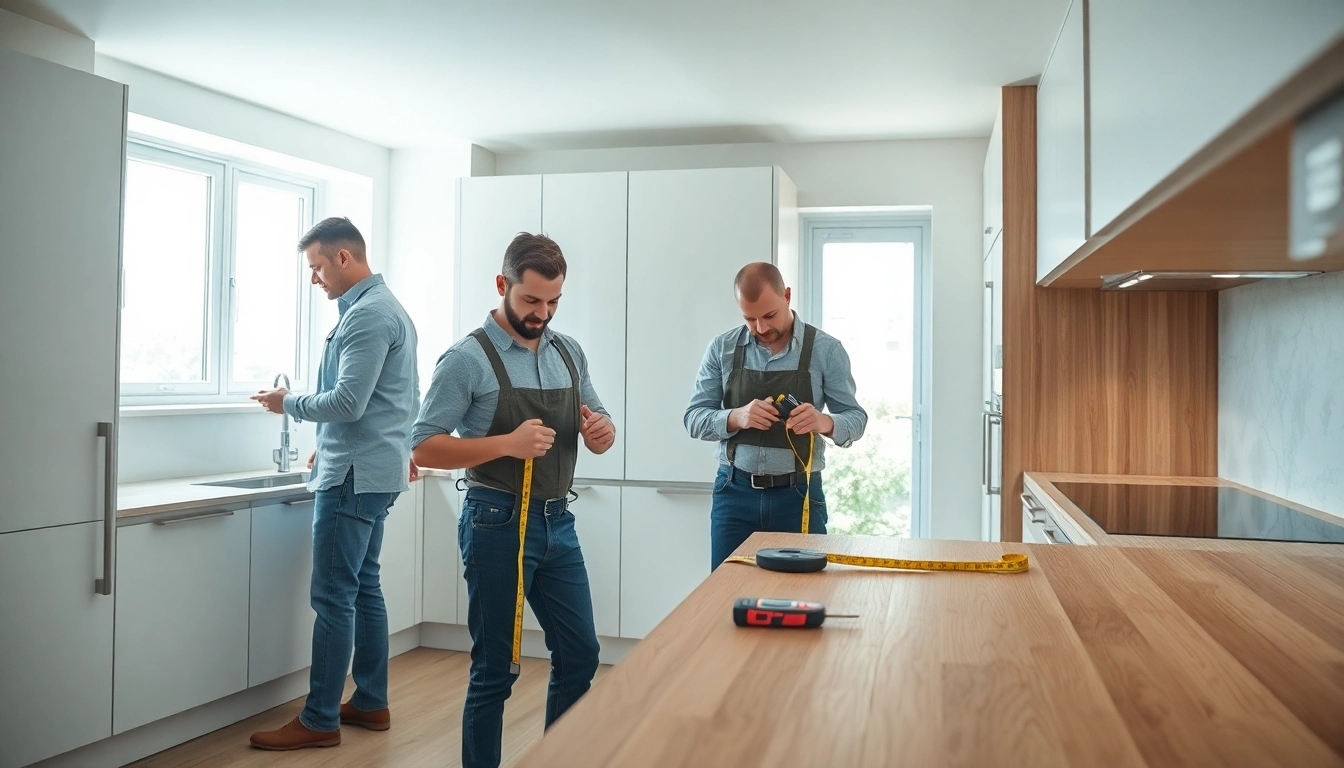Understanding the Role of Kitchen Fitters
Kitchen fitters play a vital role in transforming your culinary spaces into functional and aesthetic areas. From the initial planning stages to the final touches, kitchen fitters are essential for ensuring that your kitchen meets your design expectations and practical needs. In this comprehensive guide, we will explore the responsibilities of kitchen fitters, the skills needed to excel in this field, the tools they utilize, and how you can choose the right fitter for your project.
What Do Kitchen Fitters Do?
Kitchen fitters are specialized tradespeople tasked with installing kitchens in residential and commercial settings. Their primary responsibilities include:
- Site Assessment: Evaluating the kitchen space to determine the needed modifications for installation.
- Planning: Collaborating with clients and designers to plan layout adjustments and installations according to the specifications.
- Installation: Installing cabinets, countertops, sinks, appliances, and fixtures based on the approved design.
- Plumbing and Electrical Work: Often working alongside plumbers and electricians to ensure that installations conform to local building regulations and safety standards.
- Post-Installation Support: Offering follow-up services to check for any issues post-installation and ensuring customer satisfaction.
Essential Skills for a Kitchen Fitter
To be a successful kitchen fitter, one must possess a unique mix of skills including:
- Technical Skills: Proficiency in using tools and understanding technical blueprints.
- Problem-Solving: Ability to identify and resolve issues that may arise during installation.
- Attention to Detail: Ensuring precise measurements and alignment in installations to create a flawless finish.
- Communication Skills: Effectively conveying ideas and instructions to clients, team members, and other tradespeople.
- Time Management: Balancing multiple projects while adhering to deadlines.
Common Tools Used by Kitchen Fitters
The tools kitchen fitters use are crucial for achieving high-quality installations. Common tools include:
- Power Tools: Drills, saws, and sanders for cutting and assembling materials.
- Hand Tools: Hammers, screwdrivers, and measuring tapes for detailed work.
- Leveling Instruments: Levels and squares to ensure accurate installations.
- Protective Gear: Safety glasses and gloves to ensure safe working conditions.
How to Choose the Right Kitchen Fitter
Choosing the right kitchen fitter is a crucial step in your renovation journey. The success of your project largely depends on their expertise and reliability.
Questions to Ask Potential Kitchen Fitters
When interviewing kitchen fitters, consider asking the following questions:
- What is your experience level? Seeking fitters with years of experience can often lead to better results.
- Do you have references or portfolio samples? Look for past projects to assess their workmanship.
- What is included in your services? Ensure you know what tasks the fitter covers, from demolition to installation and cleanup.
Evaluating Experience and Specialization
It’s beneficial to look for kitchen fitters who specialize in the style or brand of kitchen you want. For instance, if you are interested in a custom kitchen, find a fitter who has extensive experience with bespoke installations.
Reading Reviews and Testimonials
Online reviews and testimonials can give insight into the reputability of a kitchen fitter. Websites like CheckaTrade and Trustpilot can be valuable resources for gauging customer satisfaction and past work experiences.
The Cost of Hiring Kitchen Fitters
Understanding the cost associated with hiring kitchen fitters is vital for budgeting your renovation effectively.
Understanding Average Rates for Kitchen Fitters
On average, kitchen fitters in the UK charge between £250 and £350 per day. Experienced fitters could charge upwards of £450 to £500 per day, which translates to a significant investment depending on the scope of your project.
Factors Influencing Kitchen Fitter Pricing
Several factors can influence the total cost of hiring kitchen fitters:
- Complexity of Installation: More complicated designs require more time and expertise.
- Geographic Location: Prices may vary significantly based on region.
- Materials Used: High-quality materials and appliances may raise costs, while budget options could lower them.
Budgeting for Kitchen Installation
When budgeting, consider all aspects of the project, including design, materials, and labor. It’s wise to set aside an additional 10-20% of your estimated budget for unforeseen issues, which often arise in renovations.
Kitchen Fitting Process Explained
Understanding the kitchen fitting process can alleviate some worries and improve communication with your fitter.
Initial Consultation and Planning
The process begins with an initial consultation where you discuss your vision. The fitter will take measurements and evaluate your space to develop a tailored plan. It’s important to communicate your preferences and budget during this stage.
Installation Day: What to Expect
On the installation day, expect the fitter to arrive on time with all necessary tools and materials. They will start by preparing the area, which may include removing old units and fixtures. During installation, communication is key—ask questions and provide feedback as needed.
Post-Installation Follow-Up
After installation, most fitters will conduct a follow-up to ensure everything is functioning correctly and address any concerns. This step is vital for confirming the quality of work and solidifying a positive relationship for future projects.
Trends in Kitchen Fitting for 2023
Staying up to date with kitchen fitting trends can inspire design choices and help you make informed decisions for your renovation.
Popular Styles and Designs
Current popular trends in kitchen design include:
- Open-Concept Layouts: Fostering a sense of space and flow.
- Smart Kitchens: Incorporating technology for convenience, such as smart appliances and lighting.
- Eco-Friendly Designs: Opting for sustainable materials and energy-efficient appliances.
Innovations in Kitchen Fitting Techniques
Innovations such as modular kitchen systems have made installations faster and easier. Utilization of digital design tools can aid in visualizing the space before actual installation, allowing for more tailored results.
Sustainability in Kitchen Installations
With a growing focus on sustainability, many fitters are now incorporating eco-friendly materials and practices in installations. This includes using recycled materials, low-VOC paints, and energy-efficient appliances to minimize environmental impact.
